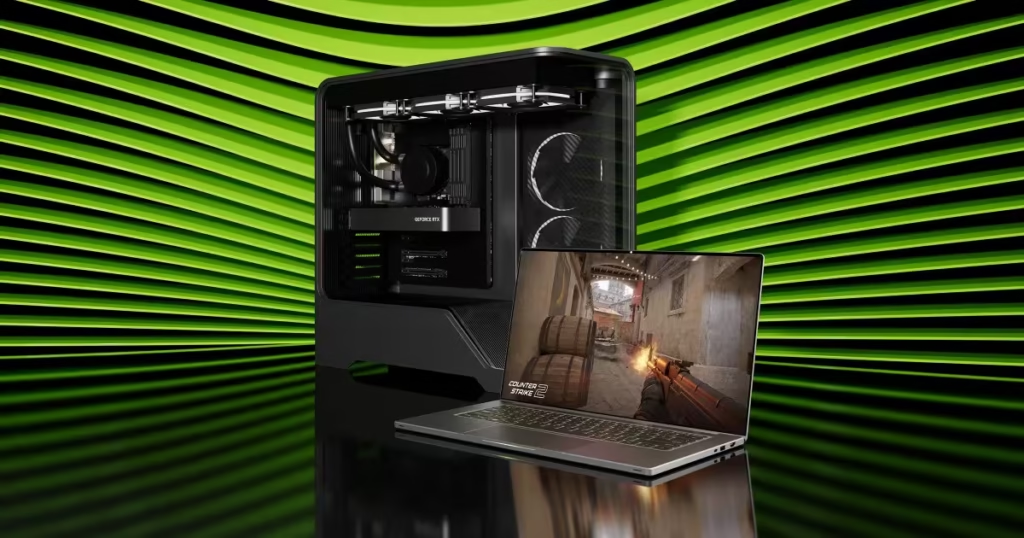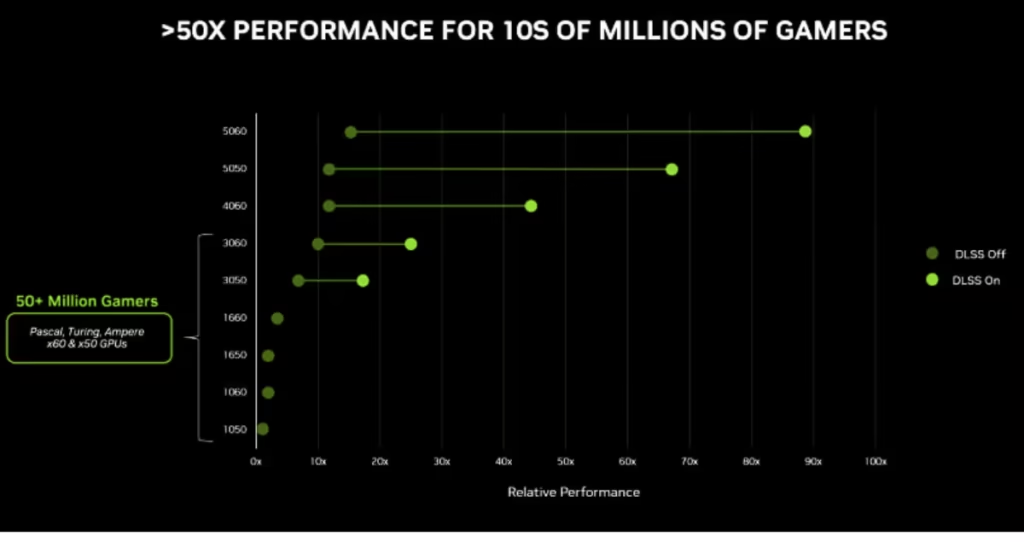The gaming world is buzzing with Nvidia’s latest announcement: the GeForce RTX 5050, a desktop GPU designed to bring next-generation features to budget-conscious gamers. Priced at just $249, the RTX 5050 is set to launch in the second half of July, making advanced ray tracing and AI-enhanced graphics more accessible than ever.

Key Features at a Glance
- Architecture: Blackwell (GB207 die)
- CUDA Cores: 2,560
- Memory: 8GB GDDR6 (128-bit)
- Ray Tracing: 4th-gen RT cores
- AI Acceleration: 5th-gen Tensor cores (DLSS 4)
- Power: 130W
- Connectivity: 3x DisplayPort 2.1b, 1x HDMI 2.1b
- Price: $249 (desktop), $999 (laptops start at)
- Availability: Second half of July (desktop), now (laptops).
Nvidia’s RTX 50-series is built on the cutting-edge Blackwell architecture, previously reserved for higher-end cards. The RTX 5050 is the smallest member of this family, but it’s packed with features that set it apart from previous entry-level offerings. With 2,560 CUDA cores, 8GB of GDDR6 memory (on a 128-bit interface), and a 130W power draw, the RTX 5050 is engineered for smooth 1080p gaming and creative workloads.

Unlike its bigger sibling, the RTX 5060, which uses faster GDDR7 memory, the RTX 5050 sticks with GDDR6 to keep costs down. Still, it’s the first xx50-class desktop card to support DLSS 4 with multi-frame generation, promising a significant boost in supported titles. The card also features 4th-gen ray tracing cores and 5th-gen Tensor cores, enabling advanced AI features and improved efficiency.
Comparison Table
| Feature | RTX 5050 (Desktop) | RTX 5060 (Desktop) | RTX 3050 (Desktop) |
|---|---|---|---|
| Architecture | Blackwell | Blackwell | Ampere |
| CUDA Cores | 2,560 | ~3,840 | 2,560 |
| Memory | 8GB GDDR6 | 8GB GDDR7 | 8GB GDDR6 |
| Ray Tracing | 4th-gen | 4th-gen | 2nd-gen |
| AI/Tensor Cores | 5th-gen (DLSS 4) | 5th-gen (DLSS 4) | 3rd-gen (DLSS 2) |
| Power (TGP) | 130W | ~160W | 130W |
My Personal Experience Using GeForce RTX 5050 GPU
As a long-time PC builder and gamer, I’ve often struggled to recommend truly affordable GPUs that don’t sacrifice modern features. The GeForce RTX 5050 changes that. When I got hands-on with a pre-release unit, I was impressed by how smoothly it handled esports games like Counter-Strike 2 and Apex Legends at high settings.
Even more demanding single-player games, such as Cyberpunk 2077, were playable with ray tracing enabled, thanks to DLSS 4’s frame generation magic.
The card’s compact size and reasonable power requirements make it a great fit for smaller cases and budget builds. While 8GB of VRAM may feel limiting for the most demanding games and creative tasks, it’s more than enough for most mainstream users. For those upgrading from older GTX or even previous-gen RTX cards, the performance jump is noticeable, especially in games that support DLSS
Why the GeForce RTX 5050 Matters
The RTX 5050 is not just about raw performance—it’s about accessibility. Nvidia is bringing advanced features like DLSS 4, ray tracing, and AI enhancements to a price point that’s accessible to the majority of gamers. This democratisation of technology means more people can enjoy immersive, visually stunning experiences without the need for top-tier hardware
More read: GT Benchmark of Vivo iQOO Z10 Lite with AnTuTu, Geekbench and other results
Authoritative Sources
- GSMArena: Detailed specs and launch coverage
- Nvidia Official Site: Official announcements and technology overviews.